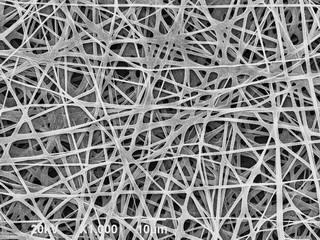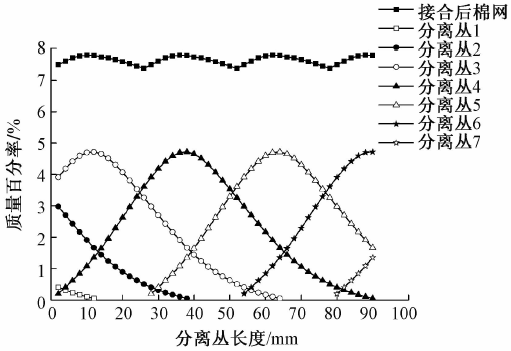2023年上海“纺织服装创意创新”研究生学术论坛
暨第十七届纺织服装创新论坛
征稿启事
主题:“绿色•时尚•创新•智能”
论坛地点:上海工程技术大学图文信息中心
论坛时间:2023年10月27日(暂定)
指导单位:上海研究生学术论坛学术委员会
主办单位:上海工程技术大学、上海市纺织科学研究院有限公司、上海市纺织工程学会
协办单位:纺织行业人体工效与功能服装重点实验室、中英智能运动服装联合实验室
一、论坛背景
纺织服装创意设计产业是上海乃至长三角地区发展的重点支柱产业之一,也是上海发展成为“全球科技创新中心”的支撑。近年来,上海努力发挥“五大中心”、“四大品牌”建设优势,聚焦建设世界第六大时尚之都为目标,坚持以“立足本土兼备国际视野”和“创意设计与商业落地并重”为特色定位,不断增强纺织服装产业链中研发设计、品牌营销等环节的国际竞争力,推动“纺织时尚”与“纺织科技”融合。通过注入科技与时尚元素,激发纺织服装产业活力,从而提高纺织服装业的整体水平和市场竞争力。
为进一步开展学术交流、促进科学研究、服务研究生成长成才,提升研究生培养质量和教育水平,从而培养具有研究能力和创新能力的高层次人才。同时结合上海产业结构调整优化以及上海创意产业的发展,由上海研究生学术论坛学术委员会指导,上海工程技术大学、上海市纺织科学研究院有限公司、上海市纺织工程学会主办,纺织行业人体工效与功能服装重点实验室、中英智能运动服装联合实验室协办2023年上海“纺织服装创意创新”研究生学术论坛暨第十七届纺织服装创新论坛。届时,将邀请纺织服装创意界国内外知名学者做专题学术演讲及论文交流。
二、论坛宗旨
以“科技引领、绿色低碳、时尚创新、智慧智能”为主旨,搭建交流平台,提高科研水平和创新能力,增进校际间学术交流,从而激发研究生的科研热情及积极性,提高研究生和广大教研人员的专业知识和学术水平。本次论坛以研讨纺织服装科技为基础,引领纺织服装工程新技术、新产品研发,促进时尚生活与绿色纺织的融合,开创纺织服装创意产业,实现纺织服装产业由规模优势向技术优势的转变,由注重产业链完整向价值链跃升转变。以科技推动生产力为着眼点,促进高校科研成果转化为社会生产力开发创意产业,立足艺术时尚和科技创意相结合的发展方向,促进上海纺织服装时尚产业的繁荣。
三、论坛主题
本届论坛以“绿色•时尚•创新•智能”为主题,展示纺织服装科技成果及研发前沿信息,面向全国纺织科学与工程学科和时尚设计学科,以及相关学科方向征集研究学术成果。形成“人才培养、学术交流、技术引进、成果转化”的机制,打造上海成为国际一流的纺织服装创新创意人才聚集地,并融入低碳环保的时尚理念,助推纺织服装科学创新发展。
四、论坛内容
本次纺织服装创意创新研究生论坛将邀请国内外专家开展专题演讲,研究生优秀论文等学术交流,并出版论文集,论坛专题及论文的征集范围如下:
纺织技术:
分主题:先进纺织材料制备及应用技术
新型纺织信息化工程与数字化技术
智能纺织材料及其先进应用技术
纳米纤维材料制备及表征技术
纺织复合材料及其成型制备技术
纺织防护材料开发与应用
先进纺织材料研究进展及测试新技术
染整技术:
分主题:绿色染整及生态功能纺织品
纤维表面处理绿色加工新技术的开发与应用
生态环保型染料、新助剂的研究与应用
纺织品清洁染整技术与过程控制
生态健康高附加值功能纺织品加工技术
(3)服装工程:
分主题:高性能服装与智能化制造技术
运动科学与运动功能性服装
智能健康监测服装技术
服装功效学与人因工程技术
功能与防护服装研究
服装工程数字化研究
服装舒适性与功能服装
(4)服装营销与管理:
分主题:先进技术驱动服装营销与品牌管理
服装智能制造管理
服装品牌创新管理
服装全渠道消费研究
服装虚拟试衣及零售
服装产业数字化、网络化和智能化转型发展
数字化物流与供应链管理
(5)时尚艺术设计:
分主题:时尚艺术设计与可持续创新融合
服饰可持续设计理论与方法
传统服饰文化传承与创新
流行趋势调研设计
可穿戴技术与智能服装设计
数字技术在时尚艺术领域的可持续创新应用
基于人因工程学的服装与服饰设计方法
五、其它事项
1、中文、英文稿件均可(英文写作可同时提供中文稿件),请严格参照标准格式(见附件2)。
2、论坛将邀请专家对投稿论文进行评审,并编辑《2023上海纺织服装创意创新研究生学术论坛暨第十七届纺织服装创新论坛论文集》,同时评选“优秀论文”等奖项进行奖励。
3、论文提交方式:
(1)提交论文电子word版和基本信息登记表电子版(见附件1)
(2)邮件标题为:作者所在单位+姓名。论文命名为“作者所在单位+姓名+论文标题+中文/英文+主题方向”,稿件录用结果将用电子邮件另行告知。
4、论文征稿截止时间:2023年8月20日。
5、本次论坛不收取会务费。
6、如有问题请发送电子投稿信箱(fzlt2022@163.com)
2023上海纺织服装创意创新学术论坛组委会
上海工程技术大学
上海市纺织科学研究院有限公司
上海市纺织工程学会
纺织行业人体工效与功能服装重点实验室
中英智能运动服装联合实验室
附件1 基本信息登记表
姓名 | 专业 | 单位 | 手机 | 通讯地址 | 论文题目 | 所投稿论文主题所属类别, 选择其一(纺织技术、染整技术、服装工程、服装营销与管理、时尚艺术设计) | 是否参会 | |
附件2- Template for papers(论坛英文论文格式)
Effect of textile&garment specialized market on regional industrial clusters
(Title of Your Paper)
Jian-Guo Zhao1*, Jason FT Mak2, OthersAuthors’ Names2
1Name of institution of the first author, Street name, City, State, post code,Country
2Name of institution of the second author, Street name, City, State, post code, Country
*Corresponding author’s email: zhaojianguo@yahoo.com
Abstract: This is a sample of the format of your paper. A maximum of 15 A4-sized pages (21 x 29.7 cm) pages with top and bottom margins of 3 cm and left and right margins of 1.5 cm. Use single space. Use double-column format after the Keywords. Arrange the text in two columns (8.2 cm), each separated by a gap of 0.6 cm. Use 11 pt size Times New Roman throughout the paper except for the headlines. Italics are used for the words: Abstract, Keywords and References. Ensure that the text on the final page is spread so that both columns finish at the same distance from the top of the page. Length of paper should range from 3,000 to 6,000 words.
Abstract: Maximum 200words (13px Times New Roman, left and right margins of 2.8cm)
Keywords:Leave one blank line after the Abstract and write your Keywords (4-6 words), for papers liked to be indexed by EI, key words should be the words included in EI Thesaurus (please visit the website: www.engineeringvillage.com). (13px Times New Roman, left and right margins of 2.8cm)
1. Introduction
As you can see for the title of the paper you must use 21px, Centered, Bold, Times New Roman. Leave one blank line and then type Authors’ Name (16px Times New Roman, Bold,centered), Department (in 11pt Times New Roman, centered), University (in 11pt Times New Roman, centered), Address (in 11pt Times New Roman, centered), Country (in Capital, 11pt Times New Roman, centered). Then you must type e-mail address of the corresponding author (11pt Times New Roman, centered).
The heading of each section should be printed in small, 19px, left justified, bold, Times New Roman. You must use numbers 1, 2, 3, … for the sections' numbering and not Latin numbering (I, II, III, …)
2. Problem formulation
Please, leave one blank line between successive sections as here.
Equations. Equations (refer with: Eq. 1, Eq. 2, ...) should be indented 5 mm (0.2"). There should be one line of space above the equation and one line of space below it before the text continues. The equations have to be numbered sequentially, and the number put in parentheses at the right-hand edge of the text. Equations should be punctuated as if they were an ordinary part of the text. Punctuation appears after the equation but before the equation number, e.g.
c2 = a2 + b2 (1)
2.1 Subsection
When including a subsection you must use, for its heading, small letters, 16px, left justified, bold, Times New Roman as here.
2.1.1 Sub-subsection
When including a sub-subsection you must use, for its heading, small letters, 15px, left justified, bold, Times New Roman as here.
3. Problem solution
Tables. Tables (refer with: Table 1, Table 2, ...) should be presented as part of the text, but in such a way as to avoid confusion with the text. A descriptive title should be placed above each table. The caption should be self-contained and placed below or beside the table. Units in tables should be given in square brackets [meV]. If square brackets are not available, use curly {meV} or standard brackets (meV).
Figures. Figures (refer with: Figure 1, Figure 2, ...) also should be presented as part of the text, leaving enough space so that the caption will not be confused with the text. The caption should be self-contained and placed below or beside the figure. Generally, only original drawings or photographic reproductions are acceptable. Only very good photocopies are acceptable.
Table 1 The sample of table
Type | Time (h) | Results |
T1 | 1 | Good |
T2 | 3 | Excellent |
T3 | 5 | Bad |
T4 | 7 | Very bad |

Figure 1 SEM of sample.
If your paper deviates from these specifications, your paper will be rejected immediately. When citing references in the text of the abstract, you should type the corresponding number in square brackets as shown at the end of this sentence [1].
Page Numbers. Do not print page numbers.
Literature References. References are cited in the text just by square brackets [1]. (If square brackets are not available, slashes may be used instead, e.g. /2/.) Two or more references at a time may be put in one set of brackets [3,4]. The references are to be numbered in the order in which they are cited in the text and are to be listed at the end of the contribution under a heading References, see our example below.
4. Conclusion
Please, follow our instructions faithfully, otherwise you have to resubmit your full paper. This will enable us to maintain uniformity in the journal. Thank you for your cooperation and contribution.
Attention: You must follow the reference format strictly, especially the punctuations.
References:
[1] Huang (Surname) FC(Initial), Boltong MG, Bermudez O, Planell JA. Formulation and setting times of some calcium orthophosphate cements: a pilot study(Paper title) [J] (For Journal). Textile Research Journal (Full name of the journal), 1993, 4(3):53-58. [Year, Volume (issue): page number]
[2] Zhang H(Author). Textile Materials (Book title) [M] (For Book).Beijing: (Press address)China Textile Press (Press name), 1989:157-182. (Year: page number)
[3] Brown W, Chow LC(Application author). Combinations of sparingly soluble calcium phosphates in slurries and paste as mineralizers and cements(Patent title) [P] (For Patent). US (Country), Patent No. 4612053(Patent number), 1986. (Year)
[4] Li FY (Author). PANI electro-spinning process and electrical properties (Title of the thesis) [D] (For thesis). Shanghai: (Press address) Donghua University (Affiliation), 2001. (Year)
论坛中文论文格式要求
(中文题名一般不超过20个汉字;用三号黑体,3倍行距)
张某某1,2,高某3,刘某某2*
(作者名之间用逗号隔开;用五号楷体,单倍行距)
(1. XXXX大学XXXX学院,江苏南京2100XX;2. XXXX大学XXXX重点实验室,江苏南京2100XX;
3. XXXX公司,河北 石家庄 3100XX)
*通讯作者:XXXX@126.com
(各单位之间用中文分号隔开;数字中文用小五号宋体,单倍行距)
摘要摘要字数应控制在200~250字,英文要与中文相对应。
(“摘要”一词用五号黑体,内容用五号宋体)
关键词 关键词1;关键词2;关键词3;关键词4;关键词5
(关键词数要求为5~8个,之间用分号隔开;“关键词”一词用五号黑体,内容用五号宋体)
Format requirements and instructions for scientific paper
(仅第1个单词的首字母大写;用四号Times New Rome体,加黑,3倍行距)
Zhang Moumou1,2 ,Gao Mou3,Liu Moumou2*
(作者姓名首字母大写,且没有空格或连线;作者间用逗号隔开;用五号Times New Rome体,单倍行距)
(1. College of XXXX,XXXX University,Nanjing, Jiangsu 2100XX, China;2. Key Laboratory of XXXX,XXXX University,
Nanjing, Jiangsu 2100XX, China;3. XXXX Co.,Ltd.,Shijiazhuang, Hebei 3100XX, China)
*Corresponding author’s email: zhaojianguo@yahoo.com
(数字及标点符号外都用斜体;用小五号Times New Rome体,单倍行距)
Abstract与中文摘要内容相对应
Keywords: keyword1;keyword2;keyword3;keyword4;keyword5(与中文关键词一一对应)
(“Abstract”“Keywords”使用加黑的五号Times New Rome;其内容使用五号Times New Rome)
1 正文格式(四号宋体加粗,1.5倍行距)
正文采用4级标题制。一级标题用四号宋体加粗,单独成行,1.5倍行距;二级标题用小四号宋体体,单独成行,单倍行距;三级四级标题用小四号宋体,单独成行,单倍行距。正文采用小四号宋体,单倍行距。
1.1 公式
请使用公式编辑插件进行编辑,单倍行距。长公式如需转行,应在记号“=、+、-”等之后断开,在下一行开头不再重复这一记号[10]。
对于公式中的变量含义,请在公式后的段落中,采用“式中:A为……;B为……;……。”的方式加以说明(仅首次出现时说明),示例如下。
 (1)
(1)
式中:Sλ为标准偏差;λ为对应的染料的最大吸收波长,nm;n为取样点的数目。
2.2 图和表
2.2.1表格的要求
表格一律采用三线表(可加辅助横线)编排,一般格式如表1所示。
表1织物规格参数表
(五号宋体)
Tab.1 Fabric specification parameters
(五号Times New Rome)
试样 编号 | 试样 名称 | 组织 | 密度/(根﹒(10 cm)-1) | 面密度/ (g·m-2) | 厚度/ mm | |
经向 | 纬向 | |||||
1 | 防水布 | 平纹 | 425 | 398 | 109 | 0.21 |
2 | 提花布 | 提花 | 156 | 139 | 128 | 0.41 |
3 | 竹节布 | 平纹 | 100 | 87 | 151 | 0.48 |
4 | 牛仔布 | 斜纹 | 150 | 108 | 380 | 0.67 |
5 | 涂层织物 | 斜纹 | 284 | 263 | 68 | 0.12 |
注:1和5号织物成分为涤纶;2和4号织物成分为棉;3号织物成分为亚麻。
表中内容中文用五号宋体,数字或英文采用五号Times New Rome字体。表注采用小五号宋体。
2.2.2图的要求
照片图请用tif格式保存。原始照片必须清晰,层次分明字体统一要求为五号宋体。显微镜或电镜照片内须有比例标尺或注明放大倍数。


(a)分离罗拉顺转定时14.5分度 (b)分离罗拉顺转定时15.5分度
图2不同顺转定时对应接合棉网的质量分布
Fig.2 Weight distribution of joint cotton web at different foward motion timing. (a) Foward motion timing 14.5 index;
(b) Foward motion timing 15.5 index
参考文献(小四号黑体,1.5倍行距)
[1] 胡国良,任继文.ANSYS 11.0有限元分析入门与提高[M]. 北京:国防工业出版社,2009.
[2] 朱清君.客车骨架静动态有限元分析[D]. 安徽:合肥工业大学,2010.
[3] 程珩,赵远.工作模态分析在减速器监测和诊断中的应用[J]. 振动、测试与诊断,2010,30 (2):197-200.
[4] Waleed F.Faris, Fazidah Saad. Dynamic characterization of elastomeric engine mounts of different geometry used in automotive industry[J]. International Journal of Vehicle Noise and Vibration, 2010, 6(1):1-39.
[5] 朱林森,周鋐,赵静.基于模态应变能分析和板件单元贡献分析的车身阻尼处理[J].汽车技术,2010,(10):8-10.
[6] 李伟. 集聚纺纱用网格圈空隙率测试方法:中国, CN201010579154.2[P]. 2012-07-11.
(中文用宋体五号字、英文和数字用Times New Roman五号字,标准字间距。)
![]() 附件2-单位-姓名-论文题目-论坛主题(论文格式要求).doc
附件2-单位-姓名-论文题目-论坛主题(论文格式要求).doc
![]() 征稿启事--2023年上海“纺织服装创意创新”研究生学术论坛.pdf
征稿启事--2023年上海“纺织服装创意创新”研究生学术论坛.pdf


